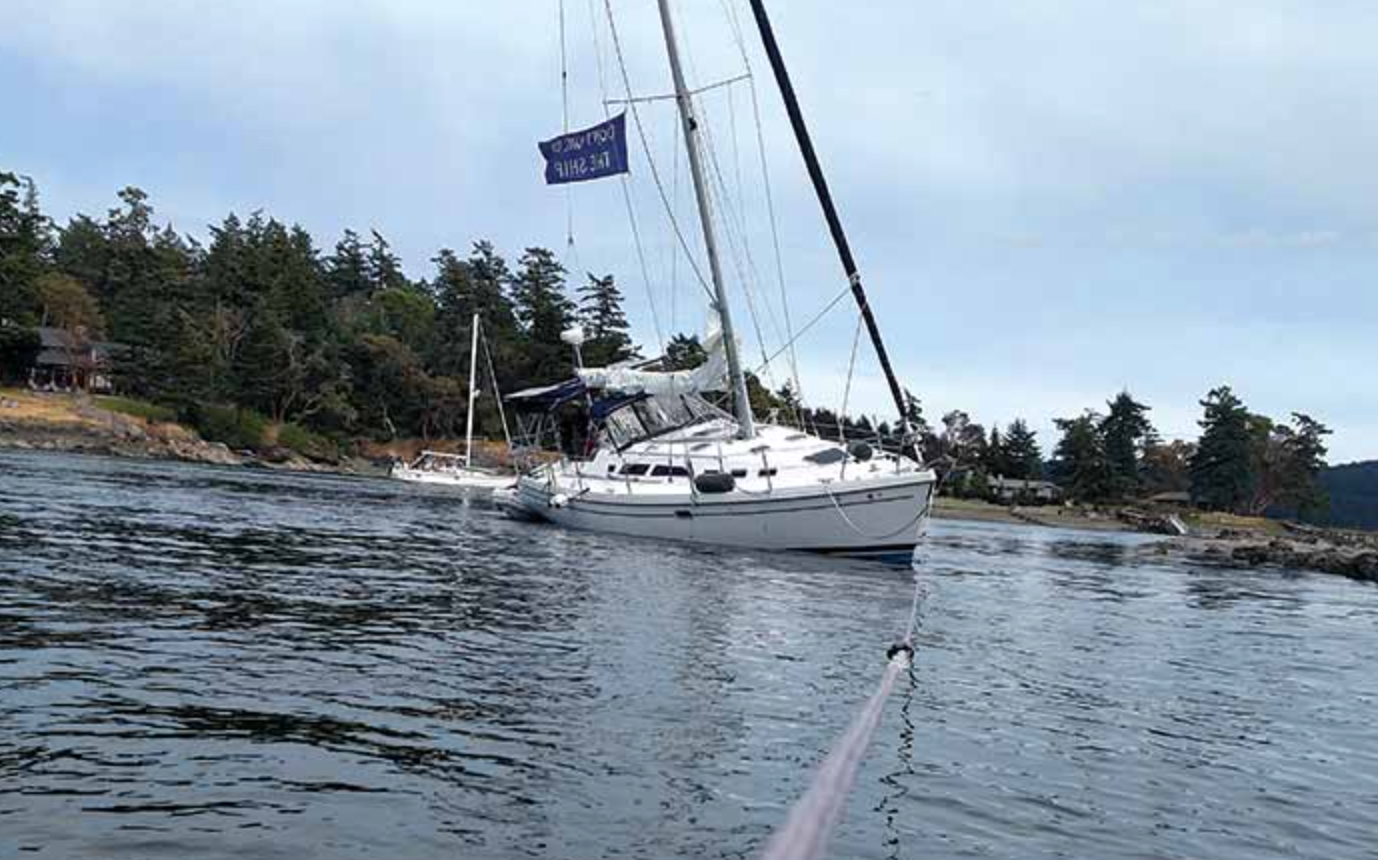Anchor Rode Cutaway Lines: Make Them Part of Inspections

Other than for inspections or testing, it’s a part of your anchor rode you hope to never fully see; the connection between the final inboard link of chain, the "bitter end," and the vessel, should consist of a section of line. The reason for this “insert,” often referred to as a cut-away, is to let the vessel operator to jettison the anchor and rode with relative alacrity should the need arise.
This might be needed in the following scenarios: you are dragging onto a lee shore, by the time you retrieve the anchor and get underway you may be in the surf or aground; you find you are being born down upon by a vessel underway or adrift; you have a medical emergency aboard and need to get underway immediately.
Vital Equipment
If time permits, tying a length of line and a float or fender onto the rode will let a captain return and retrieve it or simply record the GPS location (you could drag for it using another anchor, on a track perpendicular to the direction the rode was laying). Alternatively, you can use a longer length of floating cut-away line such as polypropylene, or Samson MFP float line; it will remain on the surface, making retrieval easier.
The cut-away line itself should be spliced onto the chain (three strand is most often used, although braided may be used provided it’s spliced), thereby minimizing its profile. A knotted line, or worse a shackle and thimble, will not pass easily, if at all, through the chain pipe; in fact, they are likely to get jammed; a scenario that prevents jettisoning or retrieval of the rode.

The line should have sufficient tensile strength to support the weight of the rode and anchor in the event it fully deploys or runs free in deep water (5/8” (1.59 cm) three-strand nylon line has a minimum breaking strength of 9,000 lbs.(4,082.33 kg) – 400’ (121.92 m) of 1/2” (1.27 cm) G43 chain weighs 1,000 lbs. (453.59 kg) and thus this should present no problem), where the full weight would have to be supported. The final 25’ (7.62 m) of chain should be painted a distinctive color, like fluorescent orange. This will serve to alert the user that he or she is approaching the end of the line, or chain, as it were.
When needed, the cut-away should deploy itself onto the deck or anchor pulpit, where it will be cut with a sharp, serrated knife (you should not have to descend into the chain locker to cut it, and you should keep your cutting tool of choice readily accessible, you should be able to find it in the dark).
Equally important, the cut-away must not be too long, the union between line and chain should stop on deck, making it possible to attach a chain hook to the rode for retrieval should it deploy inadvertently, in the event of a windlass malfunction for instance. This means you must have a chain hook that is secured to a suitable length of line, one that can be bent onto the windlass capstan. Hauling in on this will let you re-reeve the rode over the chain wildcat, sometimes called a gypsy. The pad eye or hard point to which the cut-away line is attached, inside the chain locker, must also be sufficiently sturdy to support the full rode and anchor weight.

Finally, if you’ve never tested your cutaway, you should, even, if you are willing, to the point of cutting it, so you’ll know what’s required. At the very least, run the chain out in shallow water, or while hauled, to expose the cutaway. Be warned, once the cutaway line reaches the wild cat it will run free momentarily and then be brought up short; it may be somewhat startling. Do this to ensure that the cutaway doesn’t get hung up in the chain pipe, and to make certain the line/chain interface stops where it can be easily reached to secure your retrieving chain hook tackle.
By Steve D’Antonio
Beginning his career in 1988, as a marine mechanic, electrician, manager and partner of a custom boat building shop and two boatyards and technical journalist, as well as through Steve D'Antonio Marine Consulting, Inc, Steve provides personalized and hands-on service to boat buyers, boat owners, boat builders and equipment manufacturers, as well as others in the marine industry around the world. Steve is an American Boat and Yacht Council Certified Diesel, Electrical, Corrosion and Systems Master Technician/Adviser. To learn more or to contact Steve, go to SteveDMarineConsulting.com.